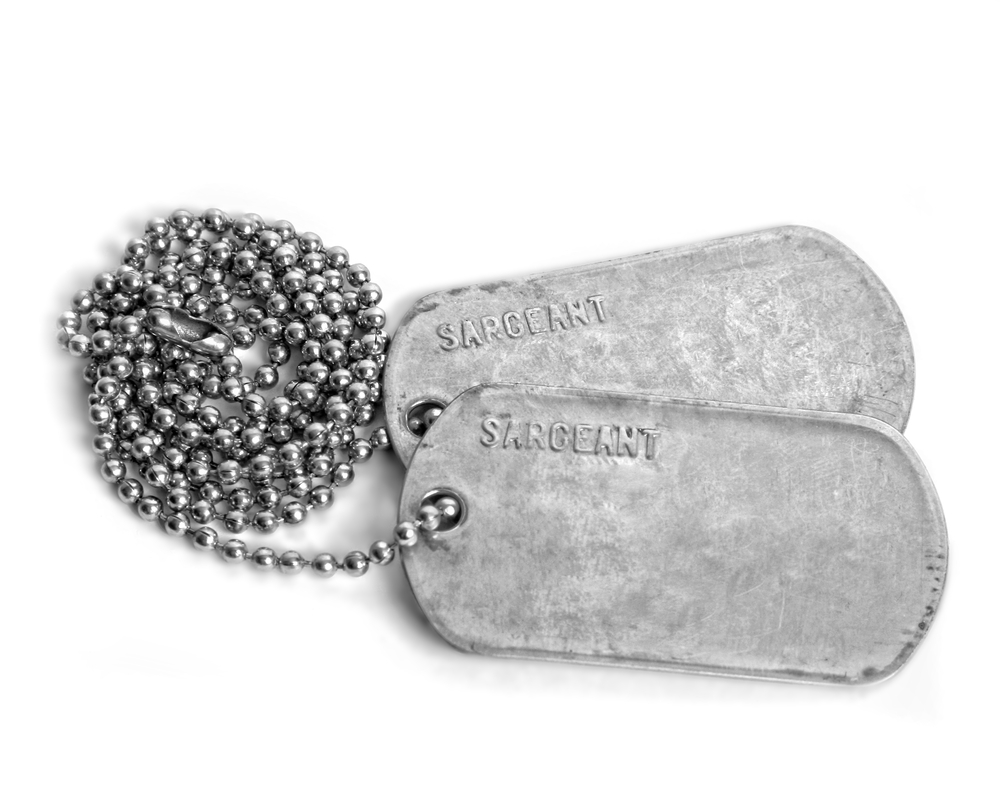 Dog tags serve as iconic symbols of military service, but their meaning and their practical usage are not always understood. The history of dog tags traces back all the way to the Civil War when mothers and sisters would stitch together ribbons meant to identify their dead kin. The vast failure of the military to properly identify a majority of the war dead in this era made clear the need for some standardized form of identification for soldiers.
Dog tags serve as iconic symbols of military service, but their meaning and their practical usage are not always understood. The history of dog tags traces back all the way to the Civil War when mothers and sisters would stitch together ribbons meant to identify their dead kin. The vast failure of the military to properly identify a majority of the war dead in this era made clear the need for some standardized form of identification for soldiers.
Today, a pair of army dog tags are a ubiquitous part of the uniform, though we’re reaching the point where dog tags are increasingly less pragmatic necessities in the field of war. Massive, conventional land engagements are increasingly less effective methods for engaging in warfare, and sophisticated DNA identification systems are now readily available. But it’s unlikely dog tags are going away anytime soon. They continue to serve an important role in terms of needs both practical and sentimental.
The Initial Purpose of the Dog Tag
The dog tag of today exists for the same primary purpose it always has — to identify the war dead. And for the most part, they’ve been effective in serving that role. The purpose of the dog tag has stayed the same, but that doesn’t mean that changes haven’t been made to it over time.
A prototypical version of dog tags that took the form of small coin-like tokens was implemented in 1906. These early forms of identification made the priority of military command clear. A soldier’s name was accompanied by their rank, company, and corps. This — along with the regimented process of forging and embossing each tag — created a system clinical in its identification.
The Dog Tag Modern Americans Know
The circular tags that were used in the early days of industrial warfare were replaced by World War II with the dog tags that we know today. And in terms of general design, the dog tags of the second World War are pretty similar to those used today. By this point in time, information on next of kin, home address, and an army serial number constituted the identifying information.
Additionally, a few adaptations were made to help an incapacitated soldier get the help they need in an emergency situation. Blood type was a necessary inclusion in these initial versions of the dog tag. Other early versions of the dog tag introduced religious affiliation — but soldiers have sometimes opted to exclude this from the tags they wear into battle if it could put them at increased risk as prisoners of war.
Implemented during World War I was the policy of wearing two dog tags. One would stay with the body of the soldier while the other would be delivered to their next of kin. This is still standard practice, but a formal record of DNA swabs from every enlisted soldier ensures that remains can always be identified even if a dog tag is never recovered.
The Future of the Dog Tag
The changing nature of war and technology might seem to be making the dog tag irrelevant, but the military has plenty of plans in place to modernize the military ID tag. The biggest concern is driven by a need for personal security. For a long time, dog tags have used a social security number as their main source of identification. But that could also make recovered dog tags a major vector in identity theft.
For that reason, the latest dog tag redesign is becoming more technologically sophisticated. The new tag format will replace social security numbers with randomized military IDs, but it will also include microchips that hold digital copies of medical and dental records. Changes like these will keep army dog tags relevant for a long time to come.